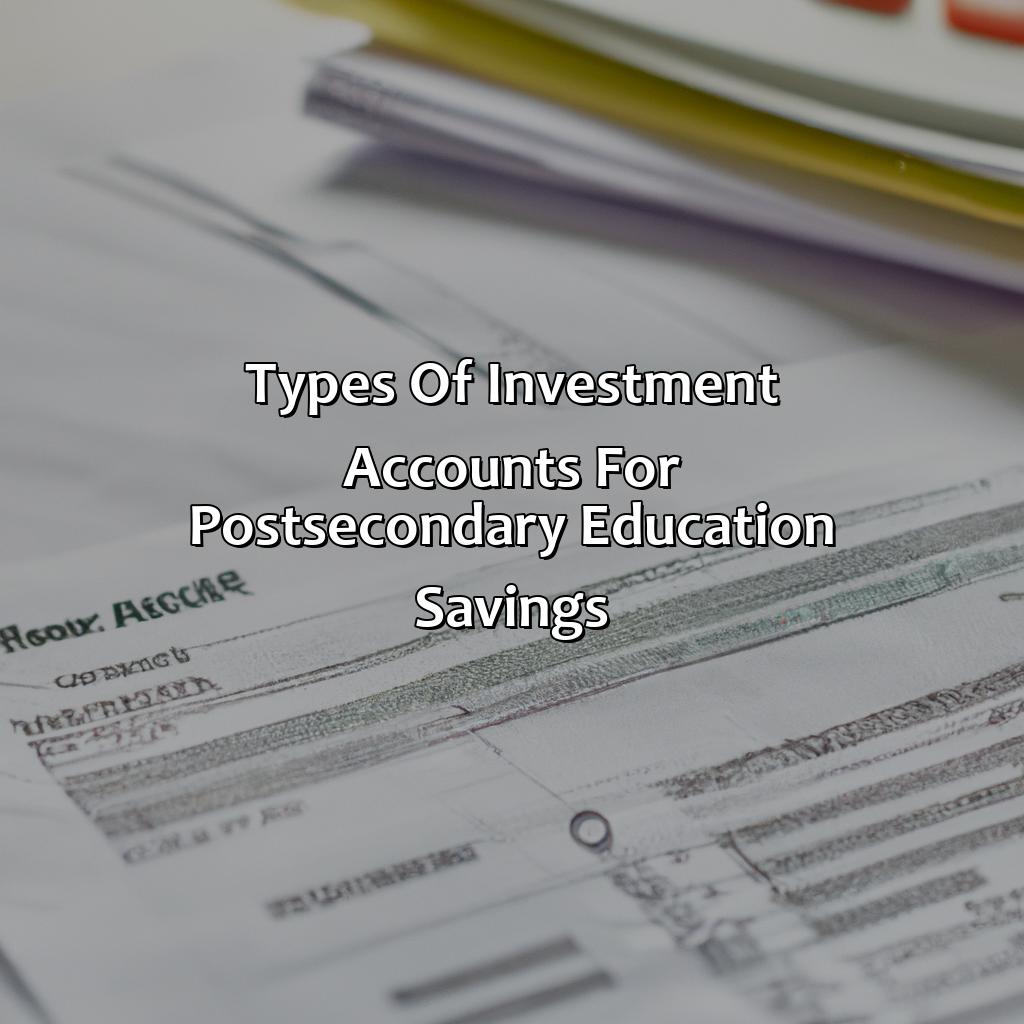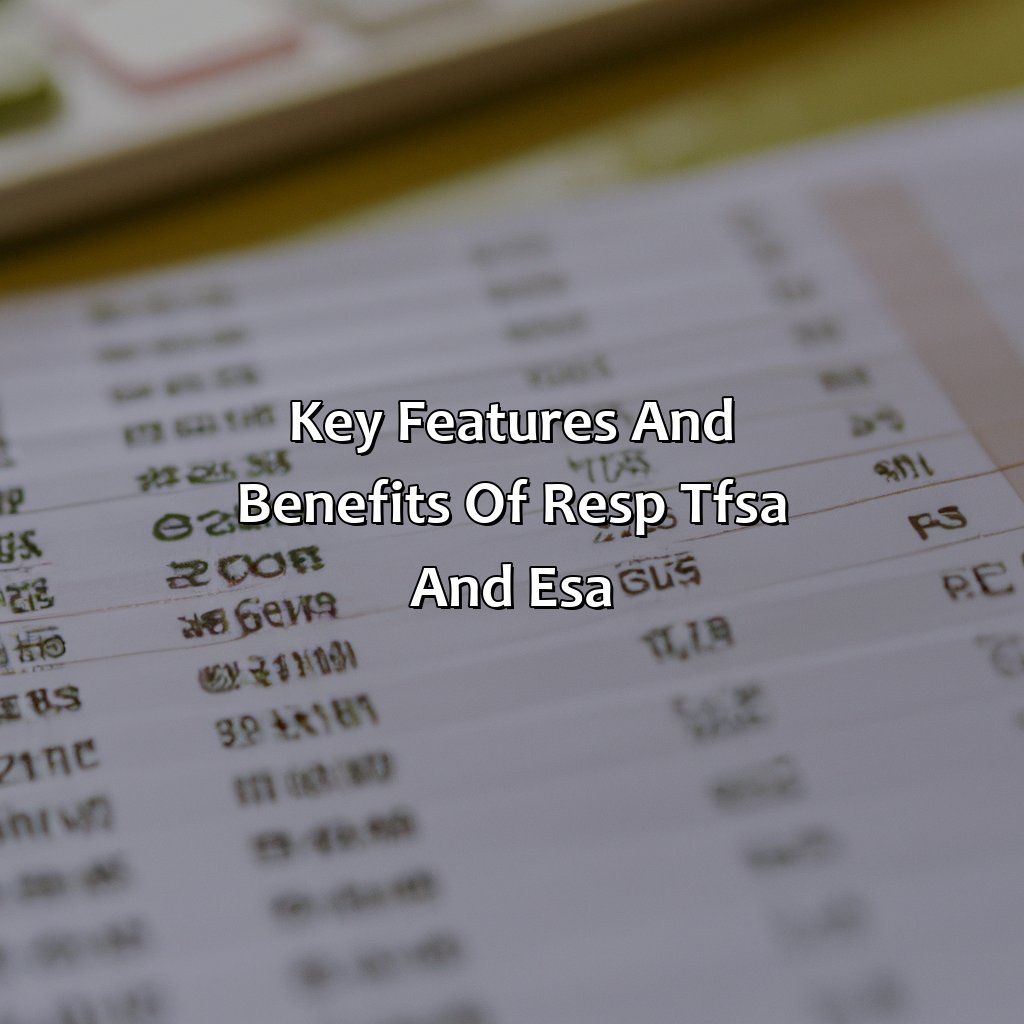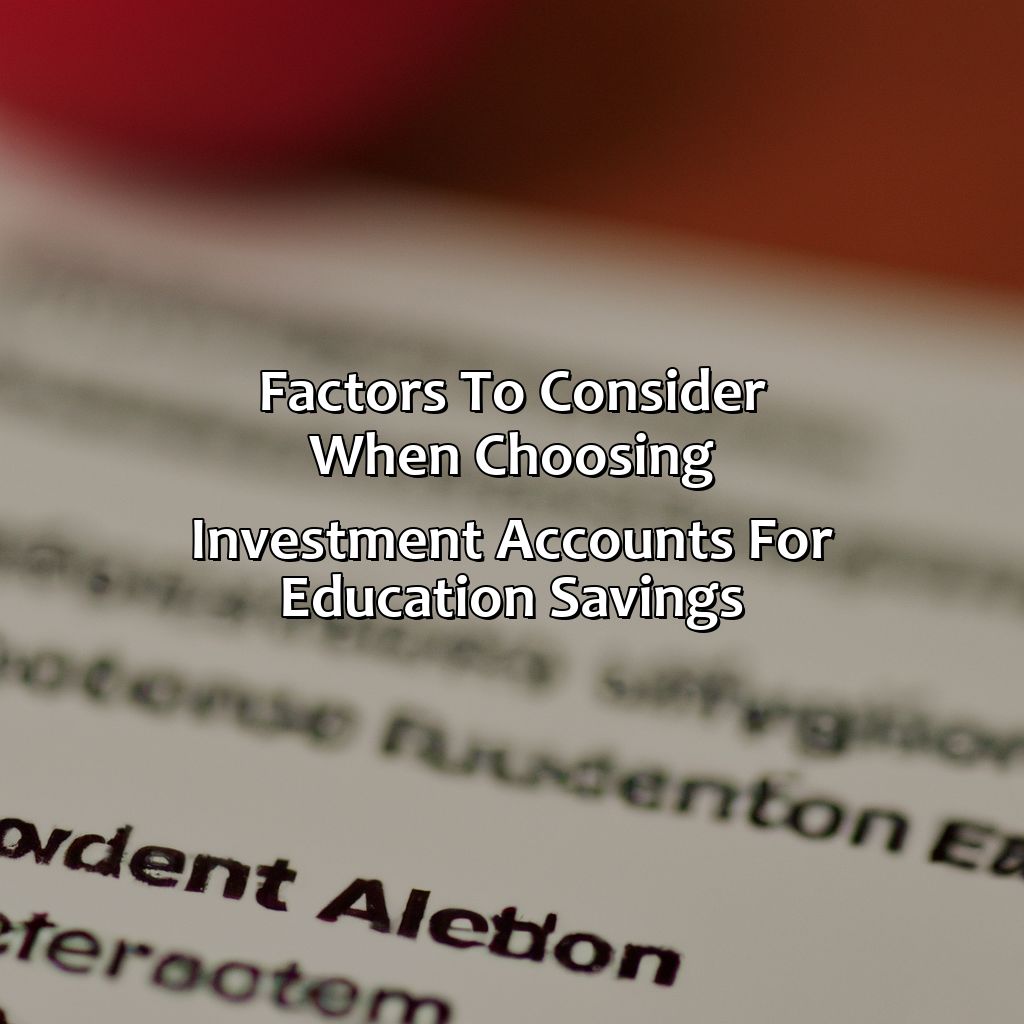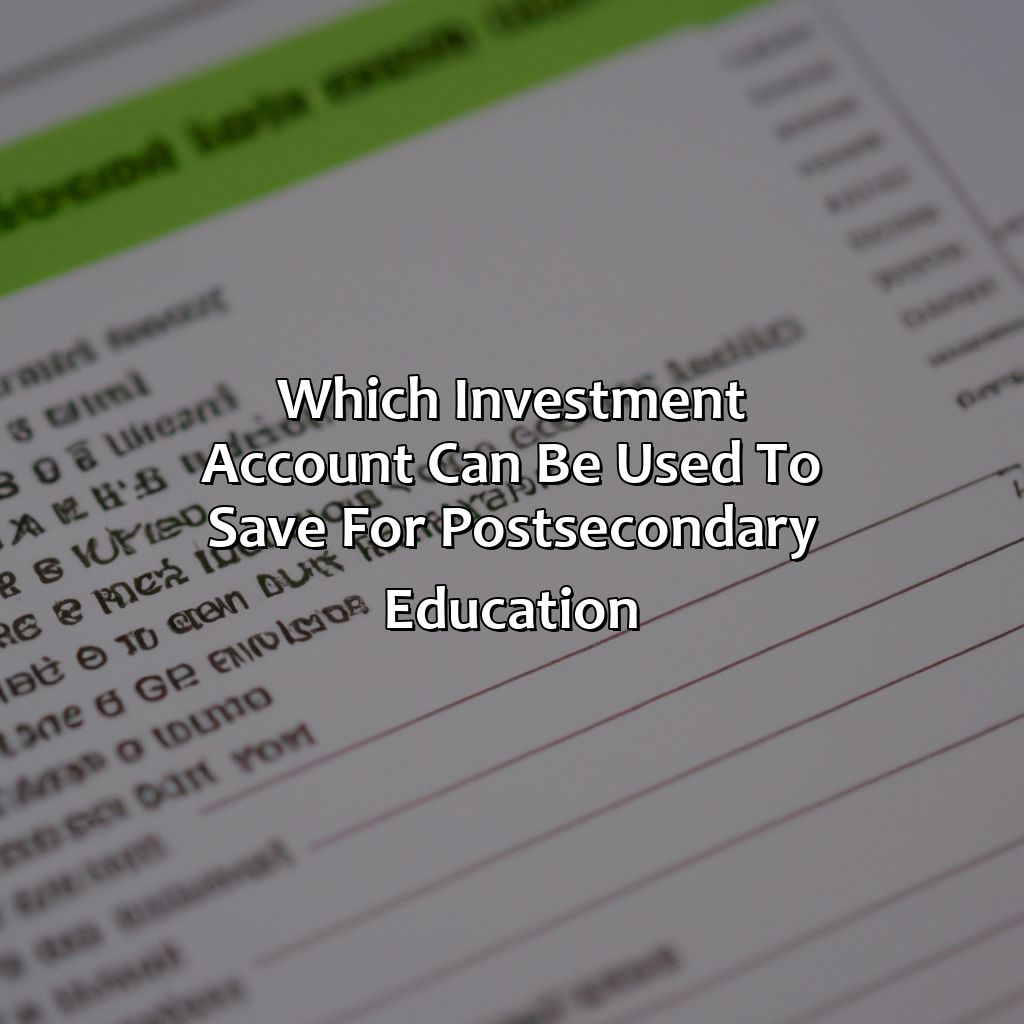Which Investment Account Can Be Used To Save For Post-Secondary Education?
Key Takeaway:
- Registered Education Savings Plans (RESPs) are a popular investment account for post-secondary education savings in Canada, offering government grants and tax-deferred growth to help maximize savings. However, they have restrictions on contribution and usage.
- Tax-Free Savings Accounts (TFSAs) can also be used for education savings, providing tax-free growth and more flexibility in usage and contribution limits. They are a good alternative for those who do not qualify for RESP grants.
- Education Savings Accounts (ESAs) are an option in the United States, allowing tax-free growth and use for qualified education expenses, but they have lower contribution limits and fewer investment options compared to RESP and TFSA.
Are you looking for the best investment account to save for your child’s post-secondary education? You’ve come to the right place. In this article, you will learn which accounts are best suited for this purpose and how to maximize your savings.
Types of Investment Accounts for Post-Secondary Education Savings
To pick the perfect investment account for post-secondary education savings, this section is here to help. It’s titled “Types of Investment Accounts for Post-Secondary Education Savings” and has subsections:
- Registered Education Savings Plans (RESPs)
- Tax-Free Savings Accounts (TFSAs)
- Education Savings Accounts (ESAs)
Discover the different features and advantages of each investment account to make a wise decision.

Image credits: retiregenz.com by Adam Woodhock
Registered Education Savings Plans (RESPs)
Registered Education Savings Plans (RESPs) are an efficient method to put aside funds for your child’s post-secondary education. They allow you to invest your money in different types of accounts and earn tax-free growth.
- RESP investment accounts can be opened for different beneficiaries, including children, grandchildren or even yourself.
- Federal government provides grants up to $7,200 per beneficiary under Canada Education Savings Grant (CESG).
- You can contribute to an RESP as much as you want annually, but the lifetime maximum contribution per beneficiary is $50,000.
- If the beneficiary doesn’t pursue higher education after high school, you have the option to transfer contributions or earnings into your RRSP with a CESG repayment penalty.
RESPs are a popular choice for families wanting to save for education costs due to their flexible nature. Yet, RESPs come with eligibility conditions and may have account fees. One should evaluate all aspects before choosing them.
A survey conducted by Statistics Canada shows that 49% of parents with children under 18 save for their child’s education.
Saving for college? Just remember, the only thing worse than student loans is paying taxes on your savings – enter the Tax-Free Savings Account.
Tax-Free Savings Accounts (TFSAs)
This article talks about various investment accounts that can be used to save for post-secondary education. Let’s take a look at Tax-Free Savings Accounts (TFSAs):
- TFSAs are a government-regulated investment account type that enables tax-free growth on balances.
- These accounts are not restricted to only one objective – users can utilize it to save and invest wisely, as long as they comply with the approved contribution limit.
- The accumulated amount in this investment portfolio could be exempted from taxes on withdrawals.
It is important to remember that TFSAs contribution limits increase yearly. Additionally, any withdrawals can be added back in upcoming years without reducing your TFSA dollar amount.
One parent from Toronto faced tremendous difficulty finding a way to fund her child’s post-secondary education until she learned about Tax-Free Savings Accounts. Having contributed an ample amount of money into her child’s TFSAs early on, the compounded interest took care of the remainder of her child’s tuition fees when she was ready for university.
Education Savings Accounts (ESAs): Because you never know when your child will want to go to college on Mars.
Education Savings Accounts (ESAs)
When it comes to saving for post-secondary education, Education Savings Accounts (ESAs) are a valuable investment account type. ESAs, also known as Coverdell accounts, offer tax-advantaged savings and can be used for qualifying expenses at eligible institutions.
One advantage of ESAs is their flexibility in terms of what expenses are covered – not just tuition and fees but also books, supplies, equipment, room and board. They have contribution limits of $2,000 per beneficiary per year and can be set up by anyone who meets income requirements.
It’s worth noting that ESAs may impact a student’s eligibility for financial aid – any assets in the account will be assessed as part of the family’s Expected Family Contribution (EFC). That being said, if you’re looking for an investment account that allows more control over how funds are used for education expenses, an ESA might be a good option to consider.
A friend of mine set up an ESA for her son when he was born and was able to grow the account significantly over the years through regular contributions and investments. When her son got accepted into his dream university with a significant scholarship, they were able to use the ESA funds towards other eligible expenses such as housing and textbooks instead of just tuition. The investment paid off in both tax benefits and the ability to use funds more creatively.
Choosing the right investment account for post-secondary education savings is like choosing a major – it’s important to weigh all the options and not just go with the first one that catches your eye.
Key Features and Benefits of RESP, TFSA, and ESA
Are you saving for post-secondary education? Investigate the advantages of RESP, TFSA, and ESA to know which account is ideal for you. Each has unique benefits. RESP grants government funds, tax-deferred growth, and certain regulations. TFSA has tax-free growth, flexibility, and deposit limits. ESA gives tax-free growth and can be used for approved education costs.

Image credits: retiregenz.com by Harry Washington
RESP: Government Grants, Tax-Deferred Growth, and Restrictions
RESP accounts offer several benefits, including government grants and tax-deferred growth. However, they also come with specific restrictions. Let’s dive deeper into the unique features of this investment account.
Below is a table showcasing the primary benefits and limitations of RESP accounts:
| Benefits | Limitations |
|---|---|
| Government grants | Contribution limits per beneficiary |
| Tax-deferred growth | Strict withdrawal rules; any unused grant money must be returned to the government |
| Flexibility in terms of investment options | High fees for some plans |
It is crucial to note that RESP contributions are limited, with a lifetime maximum contribution of $50,000 per beneficiary. Additionally, there are specific withdrawal rules that must be followed to ensure you can access your funds without triggering extra costs or penalties.
It is essential to understand these details before opening an RESP account as it may not suit everyone’s needs. Parents need to consider whether their child will pursue post-secondary education before money is invested.
I recently spoke with a colleague who decided against opening an RESP account for his son, who later decided he wanted to attend college after high school graduation. Without RESP, he struggled financially and could not provide financial help due to his lower income levels. This highlights why investing in an RESP can be an excellent choice for future financial stability.
The only thing better than tax-free growth and flexibility in a TFSA is realizing you don’t have to contribute everything to Starbucks.
TFSA: Tax-Free Growth, Flexibility, and Contribution Limits
This investment option boasts an impressive range of benefits, inclusive of tax-free growth and flexible contribution limits.
- Using a Tax-Free Savings Account (TFSA) provides a unique means to save money for educational expenses since its growth is not taxed by the government.
- The flexibility of this account allows for any unused contribution room to accumulate and be carried over into future years.
- There are no restrictions on the usage of funds from a TFSA which can be particularly beneficial for parents who want their children to have complete control over their savings after they have turned 18-years-old.
- TFSA contribution limits extend up to $6,000 annually while cumulative unused amounts carry forward each year indefinitely.
- In addition, withdrawing funds from your TFSA does not significantly impact available contribution room until the following calendar year.
- Certain investments may also be held within this account including stocks, bonds, and mutual funds.
It’s essential to note that every individual should consider the implications before deciding which savings approach is appropriate for their situation. It is recommended that you discuss your options with a professional financial advisor.
Interestingly, TFSAs were first introduced in 2009 as part of the Canadian government’s effort to encourage citizens’ savings habits. Since then, they have emerged as one of Canada’s most popular and accessible investment opportunities, regularly utilized by students looking to save or invest money towards post-secondary education expenses without incurring additional tax burdens.
Looks like using an ESA is the smarter way to pay for education expenses – not that anyone would know, since it’s the most underrated account acronym out there.
ESA: Tax-Free Growth and Use for Qualified Education Expenses
The tax-free growth and usage of an Education Savings Account (ESA) can aid in financing qualified educational expenses. This allows for the financial flexibility required to handle unforeseen costs while studying. ESA’s offer coverage for tuition, books, and various fees, providing a more stress-free environment for students and their families.
ESA accounts have flexible rules on withdrawals, allowing them to be used not only towards traditional university programs but also K-12 educational costs such as private schooling or homeschooling expenses. The account can be maximized up to a contribution limit of $2,000 per student per year. Contributions are made after-tax but can grow tax-free to help finance qualified expenses while earning income on investments without the worry of taxation.
In addition, ESAs allow individuals to change beneficiaries if the first intended beneficiary does not require all of the funds or chooses not to attend post-secondary education. Another advantage is that the account owner has better control over investment decisions than other types of educational savings plans.
Some notable history involving ESAs includes their establishment in 1997 and various updates made by Congress throughout the years. For example, changes were made in 2001 allowing elementary and secondary educational institutions to count as eligible beneficiary institutions for ESA purposes.
Choosing an investment account for education savings is like choosing a diet plan, it requires discipline and a good understanding of your financial appetite.
Factors to Consider when Choosing Investment Accounts for Education Savings
To get the most from your education savings, select the correct investment account. Eligibility, contribution limits, investment options, fees, flexibility, and risks are essential elements. Read the sub-sections below to learn how these play a role in picking the right investment account for your post-secondary education savings.

Image credits: retiregenz.com by Harry Arnold
Eligibility and Contribution Limits
To ensure that you choose the right investment account for education savings, it is important to understand the Eligibility and Contribution Limits.
Below is a table with information on eligibility criteria and maximum contributions for various education savings accounts:
| Account Type | Eligibility Criteria | Maximum Contributions |
|---|---|---|
| Registered Education Savings Plan (RESP) | Canadian residents under age 21 | $50,000 per beneficiary |
| Tax-Free Savings Account (TFSA) | Canadian residents over age 18 | $6,000 per year |
| Canada Education Savings Grant (CESG) | Beneficiaries of RESPs | Up to $7,200 lifetime maximum |
Moreover, contribution limits may differ for individuals based on their specific financial situations. It is essential to review these requirements before setting up an education savings account.
In addition, it’s important to note that some investment accounts have additional benefits beyond tax-deferred growth or withdrawals. For example, RESPs receive a government grant called the CESG which can add up to significant additional funds for educational purposes.
A close friend of mine set up a TFSA instead of an RESP due to ineligibility. As her child grew closer to post-secondary education, she realized how much she could have benefited from the extra funds provided by the CESG in an RESP instead of just her individual contributions in a TFSA. It was a tough lesson learned, but one that can be avoided by understanding eligibility criteria and choosing wisely early on.
Choosing the wrong investment account for your child’s education savings can be costly – like buying a pencil sharpener instead of a college fund.
Investment Options and Fees
When selecting the appropriate investment accounts for education savings, it’s important to take a closer look at the ‘Investment Options and Fees.’ The fees involved with these accounts can have a significant impact on your returns, so it’s wise to compare them carefully.
Below is a table displaying various investment options and associated fees. The data includes account types such as 529 plans, Coverdell ESAs, and UTMA/UGMA accounts. It also lists fees such as administrative expenses, management fees, and mutual fund expense ratios.
| Account Type | Administrative Expenses | Management Fees | Mutual Fund Expense Ratios |
| 529 Plan | $25-$80 annually in most cases | Ranges from 0.10% to 1% | Can range from 0.01% to over 2% |
| Coverdell ESA | No administrative fee in most cases | Ranges from 0.25% up to 1% | Can range from 0.1% to over 2% |
Obviously, each specific plan may have its own features and benefits that should be considered before making a decision.
It is essential to note that some investment accounts like Roth IRAs provide flexibility but can involve high taxes on early withdrawals not used for qualified education expenses.
I remember meeting my friend Mark who wanted some information about educational investment options available in the market for his child’s college education. He wasn’t aware of the different types of accounts offering unique features such as tax-free withdrawals, pre-tax contributions and others. Going over the different options and their pros and cons helped him make a well-informed decision.
Flexibility is key, unless you’re a contortionist trying to fit your education savings into a locked investment account.
Flexibility and Risks
When considering education savings, it is crucial to account for the flexibility and risks of investment accounts. Certain accounts, such as 529 plans, offer limited flexibility in terms of how funds can be used. On the other hand, other accounts like Roth IRAs provide greater flexibility but carry higher investment risk. Investment vehicles like CDs and savings accounts tend to be more conservative but also have lower potential returns.
It’s important to note that investments always come with some level of risk. However, by diversifying investments across multiple accounts or choosing a mix of high and low-risk options within a single account, investors can manage their exposure to risk while maintaining flexibility.
Overall, when selecting an investment account for education savings, it’s crucial to consider both the level of flexibility provided by the account as well as its corresponding risks. By weighing these factors against personal financial goals and risk tolerance levels, investors can choose the right account to help meet their unique needs.
According to Forbes Magazine, families who save regularly see 53% more success in achieving their college savings goals compared to those who don’t actively save.
5 Facts About Investment Accounts for Post-Secondary Education:
- ✅ A 529 savings plan is a popular investment account for saving for post-secondary education. (Source: Investopedia)
- ✅ Coverdell Education Savings Accounts (ESAs) are another account option for education savings. (Source: The Balance)
- ✅ Contributions made to 529 plans and ESAs grow tax-free as long as the funds are used for qualified education expenses. (Source: IRS)
- ✅ Qualified education expenses include tuition, fees, books, and room and board at eligible institutions. (Source: SavingForCollege.com)
- ✅ Some states offer tax deductions or credits to residents who contribute to a 529 savings plan. (Source: U.S. News & World Report)
FAQs about Which Investment Account Can Be Used To Save For Post-Secondary Education?
What type of investment account can be used to save for post-secondary education?
There are several investment accounts you can use to save for post-secondary education, including a 529 plan, Coverdell Education Savings Account (ESA), and a Roth IRA.
What is a 529 plan?
A 529 plan is a tax-advantaged savings plan designed to encourage saving for future education costs. It is administered by states or colleges and universities and can be used for tuition, books, room and board, and other qualified expenses.
What is a Coverdell Education Savings Account (ESA)?
A Coverdell Education Savings Account (ESA) is a tax-advantaged investment account that allows individuals to save for education expenses for a designated beneficiary, such as a child or grandchild. It can be used to pay for expenses related to elementary, secondary, or post-secondary education.
What is a Roth IRA and can it be used for post-secondary education expenses?
A Roth IRA is an individual retirement account that offers tax-free withdrawals in retirement. While it is not specifically designed for education savings, the funds can be used for certain post-secondary education expenses without incurring penalties or taxes.
What are the benefits of using an investment account to save for post-secondary education?
Investment accounts offer tax advantages and potential investment growth that can help you save more for education expenses. Additionally, some accounts, such as a 529 plan, may offer state-level tax deductions for contributions.
Can I use more than one investment account to save for post-secondary education expenses?
Yes, you can use multiple investment accounts to save for education expenses. In fact, it may be beneficial to utilize more than one type of account to maximize your tax benefits and investment growth potential.


